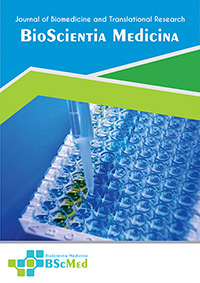Main Article Content
Abstract
Background: Onychomycosis, a fungal infection of the nail apparatus, presents a therapeutic challenge due to its recalcitrant nature and the limitations of current antifungal regimens, including potential side effects and prolonged treatment durations. Candida parapsilosis is an increasingly recognized, yet less commonly reported, yeast pathogen in onychomycosis, particularly in immunocompromised individuals or those with specific comorbidities. The exploration of effective, safe, and accessible adjuvant therapies is crucial to enhance treatment outcomes. This report details the use of an over-the-counter menthol-camphor-thymol-eucalyptus compound as an adjuvant to oral fluconazole.
Case presentation: A 69-year-old male, a gold washer by occupation with a two-month history of rheumatoid arthritis (RA) treated with methotrexate, hydroxychloroquine, methylprednisolone, and celecoxib, presented with a four-month history of yellowish-brown discoloration, uneven texture, and brittleness of both thumb nails. Dermatological examination revealed onychodystrophy, subungual hyperkeratosis, and yellowish-brown discoloration of the bilateral thumb nail plates. Dermoscopy confirmed these findings. Fungal culture of nail clippings identified Candida parapsilosis. The patient was treated with oral fluconazole 150 mg weekly for three months and twice-daily topical application of menthol-camphor-thymol-eucalyptus compound under plastic occlusion. Significant clinical improvement in nail color and texture, with no onycholysis, was observed at the 6-week follow-up. At the 3-month evaluation, fungal culture was negative, and liver function tests remained within normal limits.
Conclusion: This case demonstrates the successful use of a menthol-camphor-thymol-eucalyptus compound as an adjuvant to oral fluconazole in treating Candida parapsilosis onychomycosis in an elderly patient with RA. The combination therapy was well-tolerated and led to clinical and mycological resolution, suggesting a promising, accessible, and cost-effective adjunctive therapeutic strategy.
Keywords
Article Details
As our aim is to disseminate original research article, hence the publishing right is a necessary one. The publishing right is needed in order to reach the agreement between the author and publisher. As the journal is fully open access, the authors will sign an exclusive license agreement.
The authors have the right to:
- Share their article in the same ways permitted to third parties under the relevant user license.
- Retain copyright, patent, trademark and other intellectual property rights including research data.
- Proper attribution and credit for the published work.
For the open access article, the publisher is granted to the following right.
- The non-exclusive right to publish the article and grant right to others.
- For the published article, the publisher applied for the Creative Commons Attribution-NonCommercial-ShareAlike 4.0 International License.





